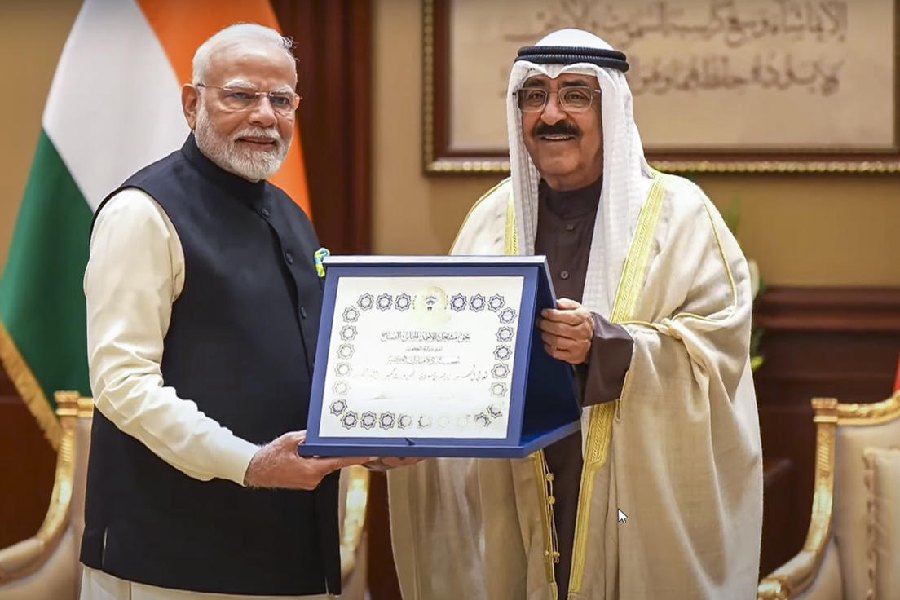The G20 Summit is finally over. At least, officially. The meeting of 20 world leaders was held in New Delhi on September 9-10 at the end of India’s turn at the rotational presidency of the grouping. Brazil has taken over as the new Chair, but Prime Minister Narendra Modi, Union ministers, and Bharatiya Janata Party leaders are trying to wring the event of the last drop of domestic public relations mileage for electoral benefits. The overwhelming temptation to hype it as a crowning of Modi has led to insensitive scenes of the BJP’s main vote-catcher celebrating at the party headquarters while the country mourned the death of two army officers and two police officers in encounters in Kashmir and Manipur. It was reminiscent of Modi continuing to shoot for the Man vs. Wild show with Bear Grylls even after he was informed of the news of 40 Central Reserve Police Force troopers being killed by a Kashmiri suicide bomber in Pulwama on February 14, 2019.
The choices any leader makes — Modi included — tell us of his/her priorities. The Chinese president, Xi Jinping, and the Russian president, Vladimir Putin, chose to skip the G20 Summit at New Delhi. But their absence did not hurt their interests. The language of the leaders’ declaration, a joint statement issued at the Summit, was completely in agreement with the Russian and the Chinese demands. To avoid the stigma of a failed Summit under India’s presidency, after Xi had towered over a large BRICS gathering in Johannesburg, the G7 countries virtually threw Ukraine under the bus. Denying Beijing the satisfaction of a failed Summit was more important for the US-led Western countries than sticking to their condemnation of Russia over the Ukraine war.
A leaders’ declaration is the barest minimum required for a Summit to not be considered a failure. At one point, even this lowest bar looked unlikely to be crossed at New Delhi. That would have been personally humiliating for Modi. It was eventually averted, but to depict it as a great achievement defies reality. To project as a massive success a Summit that managed to not fail, with little to show for achievement on geopolitics, global economy or climate change, underscores the fractious and unworkable character of the G20 grouping. The New Delhi Summit has only managed to postpone the questions about the usefulness of the grouping by another year.
The Indian media also played its part as the loyal propagandists of the government for the Summit. Most newspapers ran Modi’s ghost-written piece on the Summit which claimed that under him the G20 has taken a human-centric approach. The Union cabinet passed a resolution lauding the prime minister’s leadership of a “people centric G20 Summit”. If only these newspapers had run visuals of poor people in India’s capital city being hidden from public view by large green curtains. Or of those residing in slums whose shanties were demolished in the name of beautification. Or of the daily-wagers, hawkers, gig workers, shop owners, cab and auto drivers who were prevented from earning their livelihood as a city of millions was shut down for days. Perhaps these Indians, whom the Modi government seems so ashamed of, do not qualify as either humans or people.
The tide has now subsided and an objective analysis of the benefits that have accrued to India from the Summit is possible. A thin slice of the Indian elite is bragging of an intangible diplomatic high, but the success of the G20 presidency must be assessed based on tangible outcomes. Currently, India’s greatest strategic challenge comes from China, which has ingressed into Indian territory in Ladakh. Before the BRICS and G20 Summits, there were many media reports suggesting that some kind of breakthrough was on the cards. But the Chinese side has refused to de-escalate from areas where disengagement has taken place and spurned India’s offer of an honourable disengagement at Depsang and Demchok. Such is the rebuff from Beijing that the Modi government is no longer demanding a return to the status quo of April 2020. The G20 Summit has not helped New Delhi deal with Beijing any better.
India remains inexorably linked to China economically, with bilateral trade increasing every passing year during the border crisis. The trade balance is heavily skewed in Beijing’s favour, a trend that has continued in the tenth year of the Modi regime. The government continues to take massive infrastructure loans from the China-based New Development Bank (formerly BRICS Development Bank) and the Asian Infrastructure Investment Bank. The government has now said that it welcomes Chinese investments. Nothing in the G20 Summit at New Delhi is going to allay India’s economic and trade concerns about China.
The Summit, with its pageantry, has done even less to ease India’s economic challenges. The rhetoric of being the world’s fifth largest economy cannot mask the record unemployment rate being witnessed in India even as consumer inflation has remained above the Reserve Bank of India’s benchmark of 4% for 48 consecutive months. Despite the RBI’s intervention, the rupee is touching record lows against the US dollar. The G20 Summit, which skirted around contentious economic issues, has been of little use to a very poor country (with a per capita GDP that is 139th in the world) where 800 million depend on free food from the government to fill their stomachs.
While the Summit was on, majoritarian violence against the Kuki community continued in Manipur, that too four months after it started in May. The state government and the state police are clashing with Central forces, but nothing seems to move Modi; he has abandoned the state and its second biggest ethnic minority. The so-called successful hosting of the G20 Summit has not resulted in Modi focusing all his energies on Manipur. He has used it as a digression instead. The situation is no different from that in Jammu and Kashmir where militant violence has resurfaced in recent weeks. The G20 presidency has not helped matters in the erstwhile state in any way.
As an event, the G20 Summit mesmerised sections of the Indian population with its incessant government-fed coverage. By issuing a joint statement, the Summit did not fail. But to depict this barest minimum requirement as an outstanding success for India is disingenuous and duplicitous. It has not helped the country deal with its principal external and internal security challenges or alleviate the economic suffering of 1.4 billion Indians. At best, the G20 Summit is a political spectacle of mass distraction which is being erected as a large green curtain to conceal Modi’s massive failures as he goes into a tough parliamentary election next year.
Sushant Singh is Senior Fellow at the Centre for Policy Research and Lecturer, Yale University










